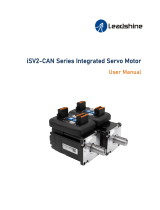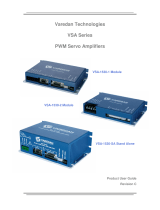
Turbo PMAC2 Realtime Express Controller
Table of Contents
Table of Contents
INTRODUCTION .................................................................................................................................. 1
Overview .............................................................................................................................................. 1
Compatibility ........................................................................................................................................ 1
Configuration ........................................................................................................................................ 2
Base Version ........................................................................................................................................ 2
Macro Ring Connector Options ............................................................................................................ 2
Option 1: Additional MACRO Interface ICs ......................................................................................... 2
Option 5: CPU and Memory Configurations ......................................................................................... 3
Option 10: Firmware Version Specification .......................................................................................... 3
Option 12: Analog-to-Digital and Digital-to-Analog Converters ............................................................ 3
Part Number Definition ......................................................................................................................... 4
HARDWARE SETUP ............................................................................................................................ 5
Receiving and Unpacking...................................................................................................................... 5
Mounting .............................................................................................................................................. 5
Mechanical Drawing ............................................................................................................................. 6
System Wiring ...................................................................................................................................... 7
Push-button Switches ............................................................................................................................ 8
FW LOAD switch ................................................................................................................................ 8
RE-INIT switch .................................................................................................................................... 8
Connections .......................................................................................................................................... 8
USB Connection, J1 ............................................................................................................................. 8
Ethernet / Modbus Connection, J2 ........................................................................................................ 9
Fieldbus Setup Connector, J3 .............................................................................................................. 10
Fieldbus Connection, J4 (Fieldbus option required) ............................................................................. 10
General Purpose I/O Connection, J5 ................................................................................................... 13
Auxiliary Connector, J8 ...................................................................................................................... 16
24 VDC Power Supply Input, J9 ......................................................................................................... 19
MACRO Connector ............................................................................................................................ 19
Realtime Express Connector ............................................................................................................... 21
Thumbwheel Multiplexer Port (JTHW Port), J10 ................................................................................ 22
SOFTWARE SETUP ............................................................................................................................ 24
Host Communications ......................................................................................................................... 24
Pewin32PRO2 Communication Setup ................................................................................................. 24
Realtime Express Network Specific Configuration Setup .................................................................... 27
Realtime Express Network Setup – Step by Step ................................................................................. 28
I-Variable Definitions ......................................................................................................................... 33
Using PMAC Motor Backlash Feature ................................................................................................ 42
Reading/Writing A4N/A5N Drive Parameters over the network .......................................................... 43
Accessing Returning Data from A4N/A5N Drives .............................................................................. 45
Using Absolute Feedback With A4N/A5N Drives ............................................................................... 47
Detecting Errors on A4N/A5N Network ............................................................................................. 47























